The Glenn Miller Story
8 /10 1 Votes
88% Rotten Tomatoes Genre Biography, Drama, Music Language English | 7.3/10 IMDb Duration Country United States | |||||||||||||||||||||||||||||||||
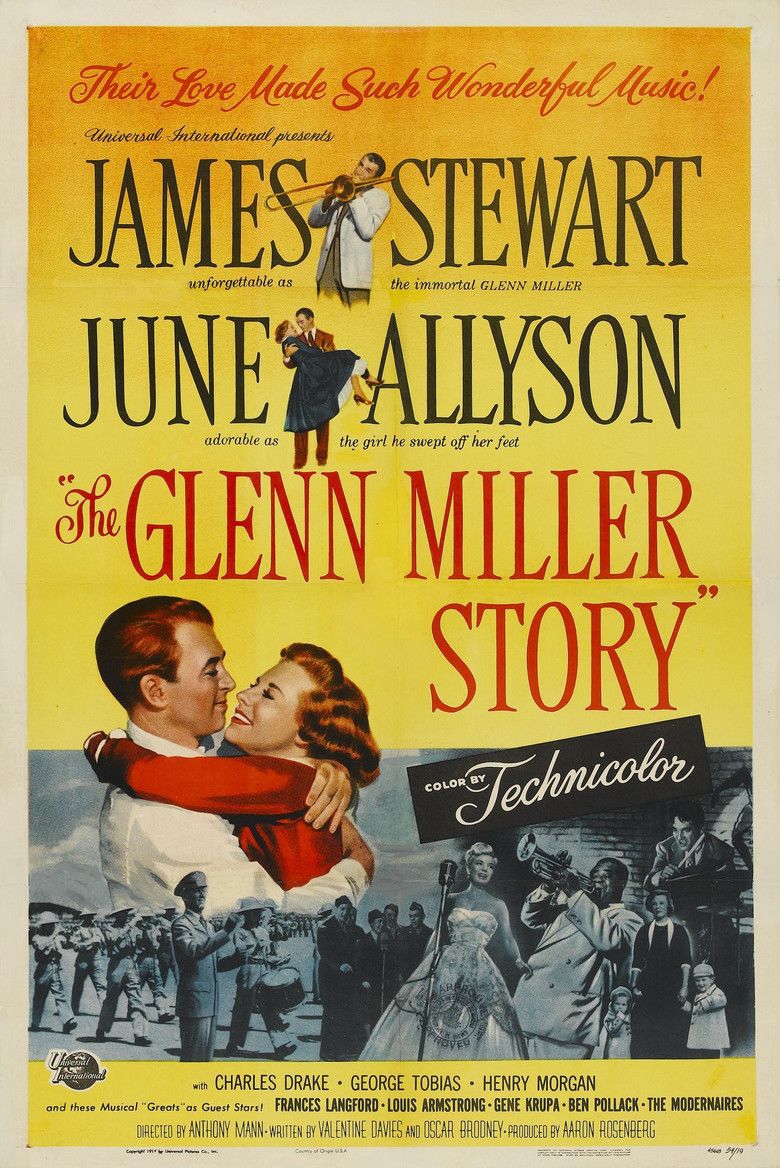 | ||||||||||||||||||||||||||||||||||
Release date 10 February 1954 (NYC) Songs Miller - Parish / Moonlight Serenade Cast (Glenn Miller), (Helen Berger Miller), (Chummy MacGregor), (Don Haynes), (Si Schribman), (Gen. Hap Arnold, USAAF) Similar movies Related Anthony Mann movies Tagline Their Love Made Such Wonderful Music! | ||||||||||||||||||||||||||||||||||
The glenn miller story 1954 missing scene 3 helen and glenn at locker
The Glenn Miller Story is a 1954 American film about the eponymous American band-leader, directed by Anthony Mann and starring James Stewart in their first non-western collaboration. Universal-International's first public announcements, early in 1953, employed the soon-discarded title, "Moonlight Serenade."
Contents
- The glenn miller story 1954 missing scene 3 helen and glenn at locker
- Plot
- Cast
- Cameo appearances
- Release
- Home video
- Music
- Musical cameos
- Billboard charts
- References
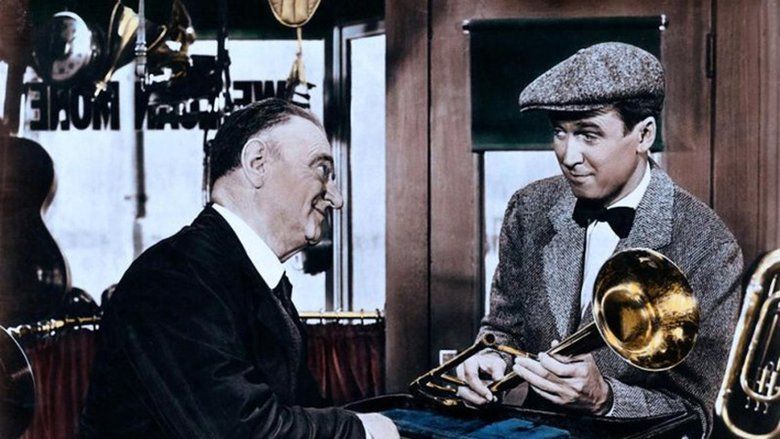
Plot
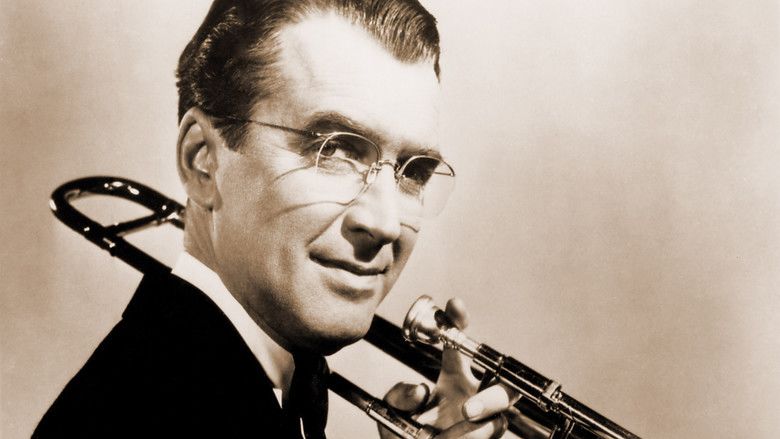
The film follows big band leader Glenn Miller (1904–1944) (James Stewart) from his early days in the music business in 1929 through to his 1944 death when the airplane he was flying in was lost over the English Channel during World War II. Prominent placement in the film is given to Miller's courtship and marriage to Helen Burger (June Allyson), and various cameos by actual musicians who were colleagues of Miller.
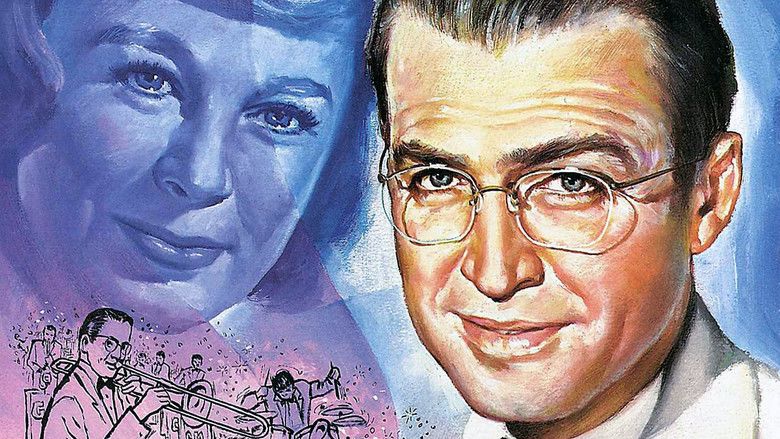
Several turning points in Miller's career are depicted with varying degrees of verisimilitude, including: the success of an early jazz band arrangement; his departure from the Broadway pit and sideman work to front a band of his own; the failure of his first band on the road; and the subsequent re-forming of his successful big band and the establishment of the “Miller Sound” as typified by “Moonlight Serenade”. Also depicted is Miller’s international success touring his band in support of the Allies in World War II.
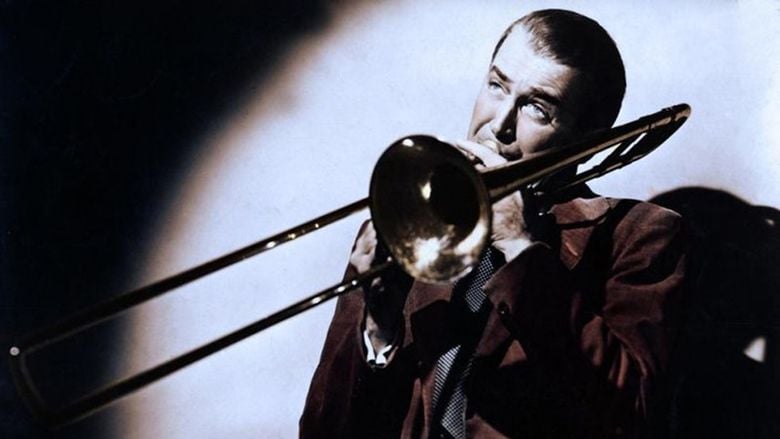
There are several anachronisms in the picture. When the military band led by Miller is playing in front of General "Hap" Arnold, a B-29 bomber is in the background. The marching troops are desegregated, which didn't happen until 1948.
Cast
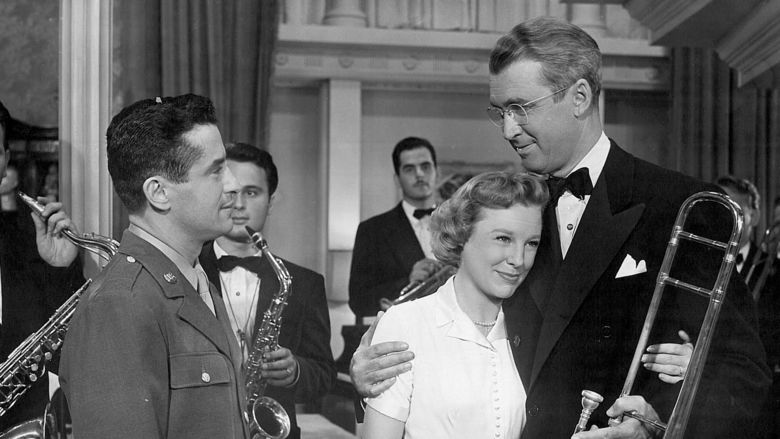
Cameo appearances
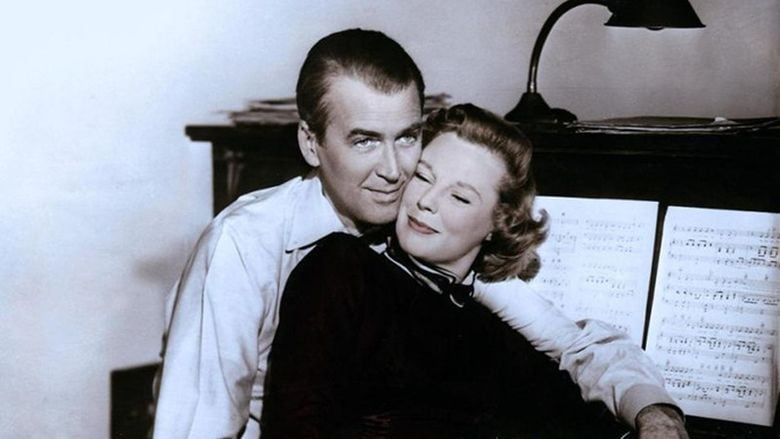
Release
Upon release in 1954, The Glenn Miller Story was massively successful at the box office. In 1954, the film was nominated for three Academy Awards, including Best Screenplay (by Valentine Davies and Oscar Brodney) and Best Score (by Henry Mancini and Joseph Gershenson). The film won the Oscar for Best Sound Recording, by Leslie I. Carey. Its soundtrack was equally successful, reaching number one on the Billboard album charts in 1954, featuring a number of Glenn Miller's most popular recordings. This is the second of three movies that paired Jimmy Stewart and June Allyson, the others being The Stratton Story and Strategic Air Command.
Stewart took a percentage of the profits. In 1955 William Goetz estimated that Stewart had earned $2 million from the film.
Glenn Miller Orchestra pianist John "Chummy" MacGregor was a technical advisor on the movie. Composer Henry Mancini composed the musical score with Joseph Gershenson, who conducted the Universal-International studio orchestra's recreations of Miller's arrangements on the soundtrack. Miller's band was portrayed by The Airmen of Note, an ensemble of the United States Air Force Band originally created in 1950 to carry on the Glenn Miller tradition.
The movie was reissued in 1985 with a stereo soundtrack. The film was originally recorded in stereo but was initially released in mono. It was screened out of competition at the 1985 Cannes Film Festival.
Home video
The film was originally released on home video in the VHS format in 1986. On March 4, 2003, the film was released onto DVD with an anamorphic display, remastered surround sound, and subtitles. The film can also be found in a James Stewart DVD collection that was released in 2007.
The film was released on Blu-ray in Germany on July 24, 2014.
Music
The soundtrack included many big band pieces originally performed by Glenn Miller's orchestra.
- "Moonlight Serenade"
- "Tuxedo Junction"
- "Little Brown Jug"
- "St. Louis Blues — March"
- "Basin Street Blues"
- "In the Mood"
- "A String of Pearls"
- "Pennsylvania 6-5000"
- "American Patrol"
- "Otchi-Tchor-Ni-Ya"
Musical cameos
The film contains songs by musicians who also make cameo appearances in the film. These cameos include: Louis Armstrong, Barney Bigard, Cozy Cole, Gene Krupa, Frances Langford, Skeets McDonald, Marty Napoleon, Ben Pollack, Babe Russin, Arvell Shaw, The Modernaires, James Young and Ray Conniff.
Billboard charts
The original soundtrack to the movie, The Glenn Miller Story---Sound Track, Decca DL 5519 (USA)/BML 8647 (UK), was number one for 10 weeks on the Billboard albums chart in 1954. The 1954 album contained eight selections. The soundtrack was re-released with an expanded track list. The album Glenn Miller Plays Selections From the Film "The Glenn Miller Story" was number one for 11 weeks on the Billboard albums chart the same year, released as RCA Victor LPT 3057. The original 1954 album contained eight selections. An expanded version of the latter album was certified Gold in 1961 by the RIAA.
The tribute album I Remember Glenn Miller, Capitol H 476, by Ray Anthony was number nine on the same Billboard album chart for that week. The extended play versions of the same albums also reached the same position on the Billboard EP charts for that week. The Modernaires released a 45 single on Coral Records, 9-61110, A Salute to Glenn Miller, which included medleys in two parts from the movie soundtrack, Parts 1 and 2: (I've Got a Gal In) Kalamazoo/Moonlight Cocktail/Elmer's Tune/Moonlight Serenade/Chattanooga Choo Choo/String of Pearls/Serenade In Blue/At Last/Perfidia, that reached number 29 on the Billboard charts in 1954.
References
The Glenn Miller Story WikipediaThe Glenn Miller Story IMDbThe Glenn Miller Story Rotten TomatoesThe Glenn Miller Story themoviedb.org
